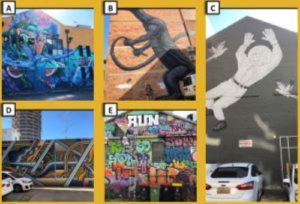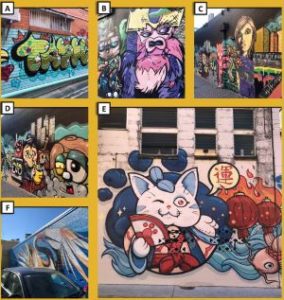Regional cities in Queensland are fast becoming the perfect canvas to integrate public art into their built environments.
Dr Tony Matthews from Griffith University’s School of Engineering & Built Environment and the Cities Research Institute has been studying the impact of public art and its use as a place-making device to drive urban regeneration and boost social capital.
“The study examines Townsville, Gold Coast and Toowoomba and how each city uses public art to showcase its unique identity as a thriving creative urban precinct,” Dr Matthews said.
“Each city uses a different approach when it comes to integrating public art and they all have different end goals.
“Our study involved a spatial audit which is essentially a walking tour of each city’s large murals.

Townsville public art
“Townsville is addressing long-running issues of urban blight through the rejuvenation of the CBD, the Gold Coast is seeking to establish individual identities for new and renewed urban precincts, and Toowoomba is repositioning itself from a sleepy agricultural community to a thriving creative place.
“In Townsville, we focused on the CBD and night-time entertainment district where we identified 26 murals on exterior building walls featuring a range of figurative and abstract styles, vivid colours and a mix of painting styles.
“On the Gold Coast, we looked at the Southport Priority Development Area where we viewed 18 public murals depicting a series of urban-themed neon animal characters, plus artworks which had a distinct Asian theme include gateway markers, lantern style string lighting and traditional sculptures.
“The Toowoomba survey area includes Herries, Neil and Victoria Streets plus Chalk Drive, in which we saw more than 80 sanctioned murals on public and private property involving a range of figurative and abstract styles with bold colours and a mix of aerosol and traditional painting styles.”
As well as the spatial audit, the researchers interviewed key producers of public art, elected officials, urban planners and designers, public art specialists and community development workers.

Gold Coast public art
Dr Matthews said it was great to see a plethora of public art forging a presence in regional and non-capital cities.
“The art producers we spoke to firmly believe that public murals have improved spaces, brought life to streets and benefitted communities,” he said.
“Public artworks can indeed help a regional city with its core identity, and, if the right balance is achieved, can greatly assist with creative placemaking and urban renewal.
“Quality public art programs, incorporating the preferences of producers and users, can reflect the confidence and aspirations of cities, as they look to the future while respecting their people and histories.”

